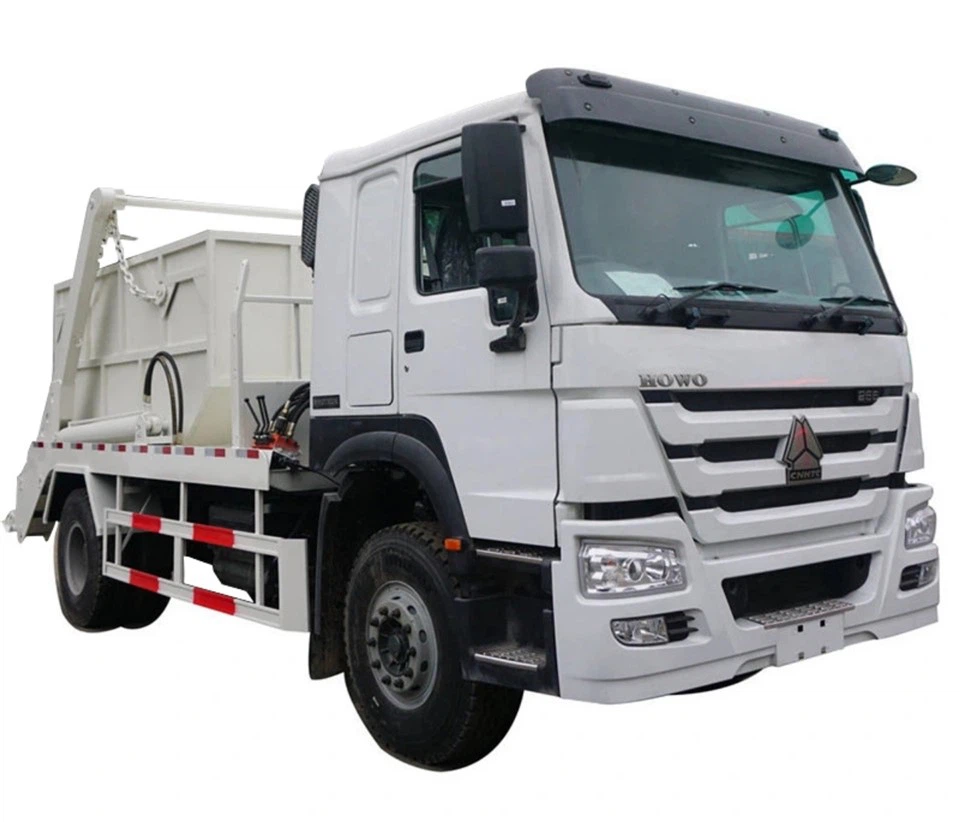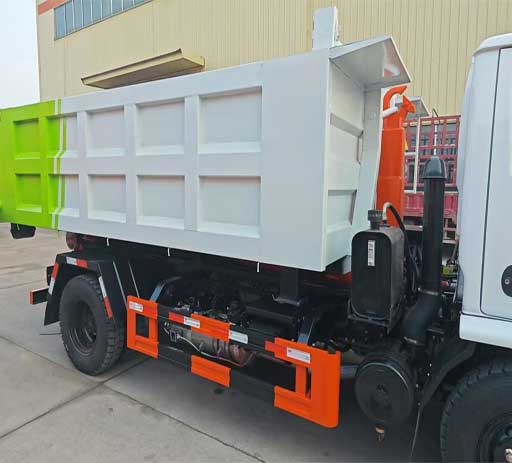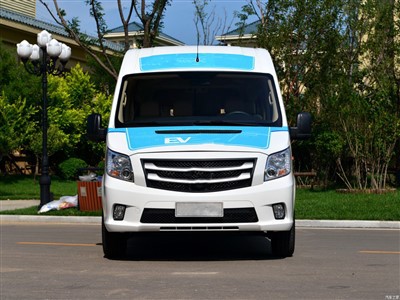Understanding Leach Refuse Trucks: Design, Functionality, and Best Practices

Introduction
Leach refuse trucks play a critical role in modern waste management systems, ensuring that refuse collection is efficient and environmentally friendly. These specialized vehicles are designed to manage the challenges associated with collecting and transporting waste, particularly in urban and suburban areas. In this article, we will delve into the specifics of leach refuse trucks, exploring their design, functionality, and operational best practices in detail. We’ll also cover practical tips for municipalities and waste management companies, assess the costs and benefits associated with these trucks, and provide answers to common questions surrounding their use.
What are Leach Refuse Trucks?
Leach refuse trucks are heavy-duty vehicles specifically engineered for waste collection. They are equipped with features that facilitate the efficient collection, compaction, and transportation of refuse and recyclables. These vehicles are generally characterized by their large bodies, hydraulic mechanisms, and robust structures built to withstand the rigors of daily waste collection.
History of Leach Refuse Trucks
The history of leach refuse trucks dates back to the mid-20th century, when increasing urbanization necessitated advanced waste management solutions. The first compactors were designed to reduce the volume of waste, allowing for more efficient transport. Over the decades, improvements in technology and design have made leach refuse trucks more reliable, efficient, and environmentally friendly.
Key Features of Leach Refuse Trucks
Leach refuse trucks are equipped with a range of features tailored to enhance waste collection and management. Key features include:
Compaction Mechanism
The primary function of leach refuse trucks is to compact waste materials, reducing their volume. The compaction mechanism applies immense pressure to waste, allowing more refuse to be loaded into the truck at once. This capability reduces the number of trips required to transport waste to landfills, improving efficiency.
Hydraulic Systems
Leach refuse trucks rely on hydraulic systems to operate various components, including the lifting and lowering of the hopper, the compaction mechanism, and the unloading of waste. This system provides the necessary power to perform tasks efficiently and with minimal manual labor.
Built-in Safety Features
Safety is paramount in waste collection, and leach refuse trucks come with several built-in safety features. These may include rearview cameras, automatic braking systems, and reinforced structures designed to protect both operators and pedestrians.

Environmentally Friendly Options
Many leach refuse trucks now feature eco-friendly technologies, such as lower emissions engines and energy-efficient systems. This focus on sustainability helps waste management companies meet environmental regulations and community expectations.

Types of Leach Refuse Trucks
Not all leach refuse trucks are created equal; there are various types designed for different waste management needs. Understanding these types is crucial for municipalities and waste management companies.
Side Loaders
Side loader leach refuse trucks allow operators to collect waste from the side of the street. They are often used in residential areas where parked cars may limit access. Operators can control the collection process through hydraulic arms that lift containers directly into the truck.
Rear Loaders
Rear loader trucks have a more traditional design, where waste is loaded from the back. They are popular for their simplicity and efficiency in collecting large volumes of waste. Rear loaders generally require manual labor to load bins into the truck, making them suitable for rural or suburban areas.
Automated Refuse Trucks
Automated refuse trucks use robotic arms to collect waste bins, reducing the need for manual labor and increasing efficiency. These trucks typically rely on advanced sensors and cameras for navigation and operation, making them an innovative option for modern waste collection.

Operational Best Practices for Leach Refuse Trucks
To maximize efficiency and ensure safety, implementing best practices in the operation of leach refuse trucks is essential. Here are some practical approaches to consider:
Regular Maintenance
Routine maintenance of leach refuse trucks is vital to ensure their efficient operation. Operators should adhere to a maintenance schedule that includes checking hydraulic systems, brakes, tires, and engine performance. This proactive approach minimizes the risk of breakdowns and extends the lifespan of the vehicle.
Training for Operators
Proper training for truck operators cannot be overstated. Ensure that all operators receive comprehensive training on operating procedures, vehicle systems, and safety protocols. This education helps reduce accidents and increases overall efficiency in waste collection.
Route Optimization
Implementing route optimization software can significantly improve efficiency and reduce fuel consumption. By analyzing collection patterns and traffic data, waste management companies can design routes that minimize distance and maximize time savings.
Accurate Waste Classification
Accurately classifying waste before collection can help in managing recycling and disposal processes effectively. Train operators to differentiate between recyclable materials and general refuse, ensuring proper handling and disposal according to local regulations.
Cost Factors Related to Leach Refuse Trucks
When investing in leach refuse trucks, it is imperative to consider various cost factors that affect a waste management company’s budget:
Purchase or Lease Costs
Determining whether to purchase or lease leach refuse trucks can significantly influence financial planning. Evaluate long-term needs, cash flow, and budget constraints to make an informed decision.
Operational Costs
Operational costs encompass fuel, maintenance, repairs, and labor. Understanding these ongoing expenses is essential for budgeting and financial forecasting. Consider fleet management solutions to monitor costs effectively.
Environmental Compliance Costs
With increasing environmental regulations, investing in eco-friendly technologies and meeting compliance standards can incur additional costs. However, these investments may yield long-term savings through reduced taxes, improved community relations, and operational efficiencies.
Practical Tips for Managing Leach Refuse Trucks
Managing a fleet of leach refuse trucks involves strategic planning and decisive action. Below are some practical tips to consider:
Embrace Technology
Utilize fleet management software for tracking vehicle performance, maintenance schedules, and route management. Technologies like GPS and IoT can also help improve operational efficiency and reduce costs.
Engage with the Community
Building a strong relationship with the community can enhance the reputation of waste management companies. Look for opportunities to engage in community clean-up events and educate residents about waste disposal practices and recycling initiatives.
Monitor Emerging Trends
Stay updated on emerging trends in waste management such as zero-waste initiatives, composting programs, and advancements in waste technology. Adapting to these trends can provide a competitive edge and better align services with community needs.
Frequently Asked Questions (FAQs)
What is the lifespan of a leach refuse truck?
The average lifespan of a leach refuse truck is typically between 8 to 14 years, depending on usage, maintenance, and the specific model. Proper care can extend this lifespan significantly.
How much waste can a leach refuse truck hold?
Leach refuse trucks vary in capacity, but most can hold between 10 to 30 cubic yards of waste, depending on their design and size. Side loaders usually hold a smaller capacity than rear loaders.
What are the benefits of using automated refuse trucks?
Automated refuse trucks reduce the need for manual labor, increase safety by minimizing operator exposure to traffic, and can enhance collection efficiency through streamlined operations.
How do leach refuse trucks contribute to environmental sustainability?
Leach refuse trucks equipped with eco-friendly technologies help reduce emissions, foster efficient waste collection, and improve recycling efforts, thereby contributing to overall environmental sustainability.
What kind of training do operators require?
Operators of leach refuse trucks should undergo training that covers vehicle operation, safety protocols, maintenance checks, and waste classification to ensure they are well-prepared for their tasks.
Can leach refuse trucks collect recyclables?
Yes, many leach refuse trucks are designed to collect recyclables alongside general waste. However, it is essential to understand local regulations and ensure proper segregation of materials.
